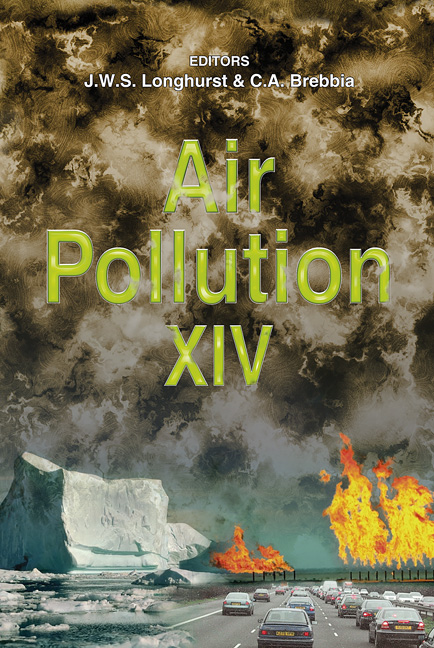The Quantitative Relationship Between Visibility And Mass Concentration Of PM2.5 In Beijing
Price
Free (open access)
Transaction
Volume
86
Pages
16
Published
2006
Size
554 kb
Paper DOI
10.2495/AIR060591
Copyright
WIT Press
Author(s)
J.-L. Wang, Y.-H. Zhang, M. Shao & X.-L. Liu
Abstract
The pollution of PM2.5 is a serious environmental problem in Beijing. The annual average concentration of PM2.5 in 2001 from seasonal monitor results was more than six times that of the US national ambient air quality standards proposed by US EPA. The major contributors to mass of PM2.5 were organics, crustal elements and sulfate. The chemical composition of PM2.5 varied largely with season, but was similar at different monitor stations in the same season. The fine particles (PM2.5) cause atmospheric visibility deterioration through light extinction. The mass concentrations of PM2.5 were anti-correlated to the visibility, the best fits between atmospheric visibility and the mass concentrations of PM2.5 varied throughout the year: following a power law in spring, exponential in summer, logarithmic in autumn, and power or exponential in winter. As in each season the meteorological parameters such as air temperature and relative humidity change from day to day, the reason for the above correlations between PM2.5 and visibility obtained at different seasons probably come from the differences in chemical compositions of PM2.5. Keywords: PM2.5, atmospheric urban aerosol, air pollution, meteorological factor, visibility. 1 Introduction Aerosol is of great concern in current atmospheric chemistry researches (Wang [9]). The research on physical and chemical properties of aerosol is important for
Keywords
PM2.5, atmospheric urban aerosol, air pollution, meteorological factor, visibility.





